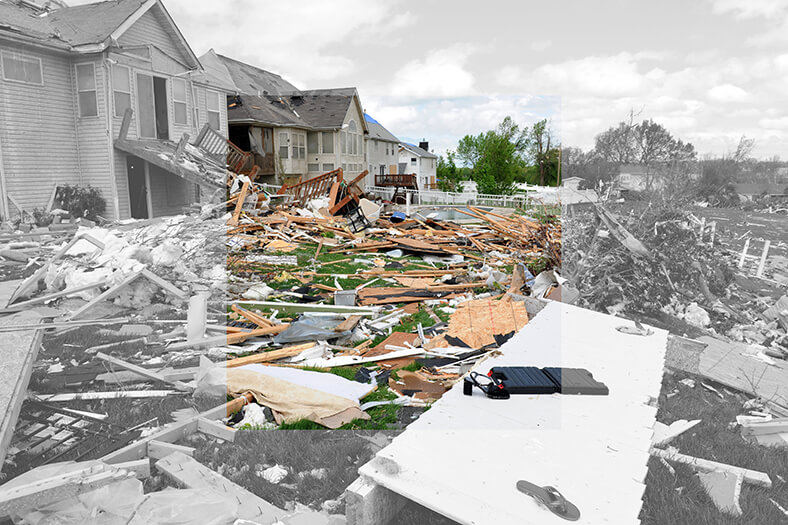
CATASTROPHE
RESPONSE
Floods, landslides, earthquakes, winter storms causing damage, tornadoes or high winds, fires: in the event of a natural disaster, rapid and effective response is essential.
CATASTROPHE RESPONSE

Floods, landslides, earthquakes, winter storms causing damage, tornadoes or high winds, fires: in the event of a natural disaster, rapid and effective response is essential.
In an emergency situation, being able to count on a team of forensic engineers, mainly made up of civil and structural engineering experts, is a major asset. When several properties in the same geographic area are affected by a sudden, unexpected event, the time factor is crucial; this is why coordination and experience make all the difference.
From coast to coast, our catastrophe response team’s mission is to get to the site of a disaster quickly to assess the structural condition of affected buildings and provide organized and efficient services in the event of multiple claims. If necessary, our experts can also offer shoring recommendations for damaged structures.
How does a catastrophe response work?
- A CAT manager is appointed to oversee operations remotely and leave nothing to chance.
- Well-established procedures are then implemented in order to send our CAT team to the scene as quickly as possible.
- A preliminary form report is produced within 48 hours of our site investigation.
- When necessary, submitted in the following weeks, a full report develops this preliminary opinion based on our observations and our in-depth analysis of the event.
With ongoing training and expertly coordinated and supervised off-site assistance, our experts can respond safely across Canada in the event of a disaster.
Meet our CAT Team Leaders:
- Atlantic Lead: François d’Entremont, P.Eng.
- Quebec Lead: Alexandre Provencher, P.Eng.
- Ontario Lead: Paul Steneker, Ph. D., P.Eng.
- Prairies Lead: Carla Ladner, P.Eng.
- BC Lead: Jamie Shandley, P.Eng.
